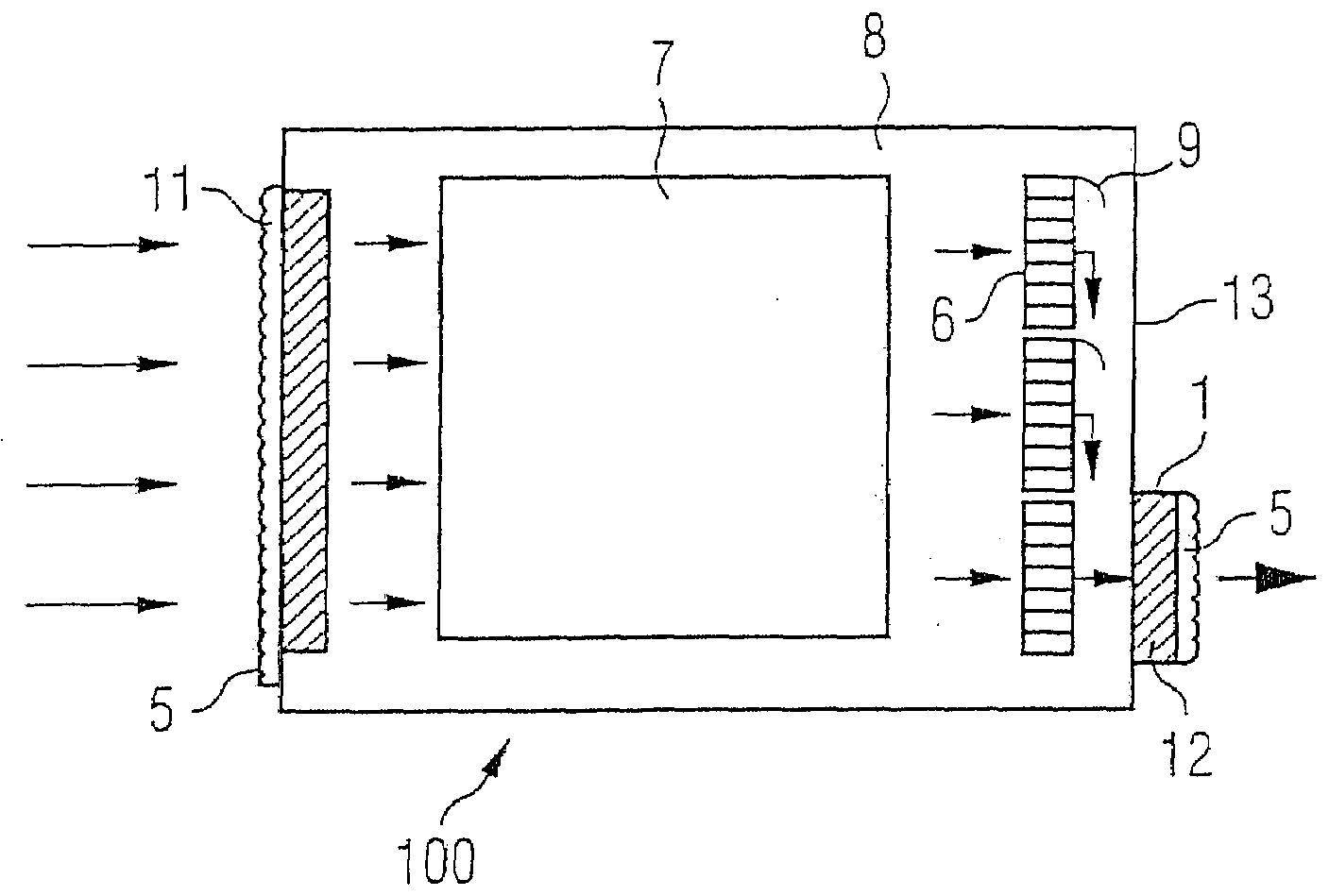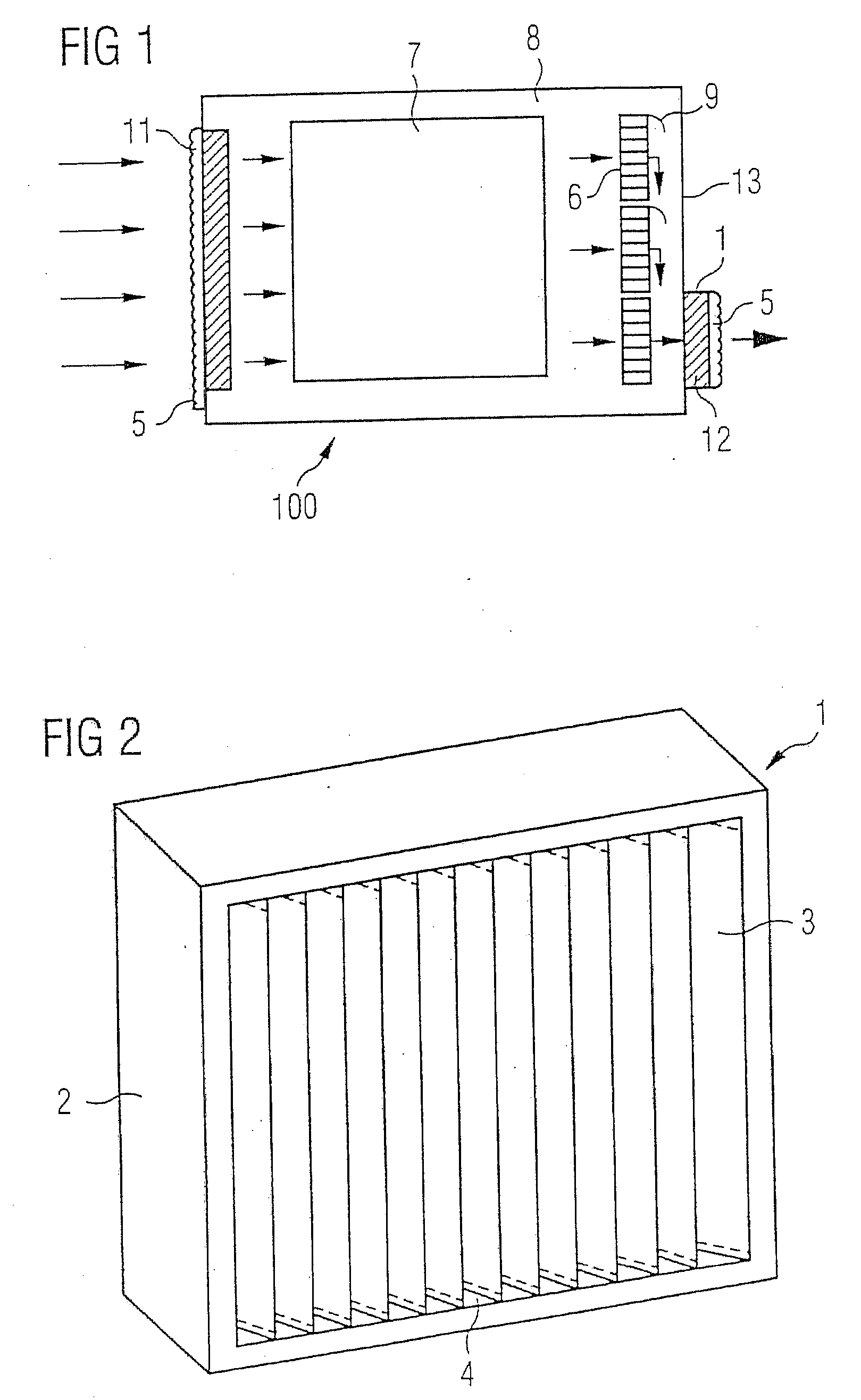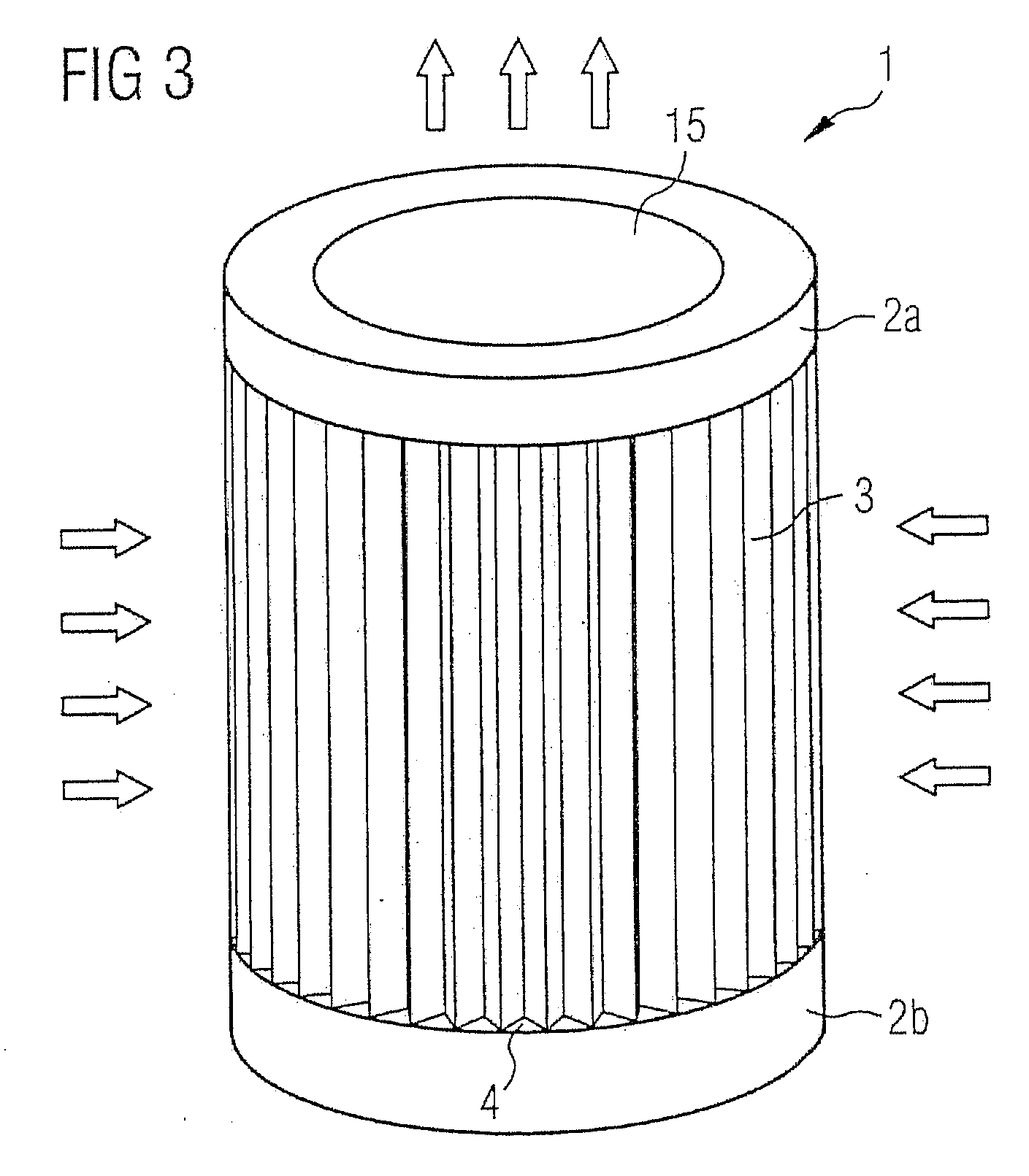Fan cooling unit for cooling electronic components
a technology of electronic components and cooling units, which is applied in the direction of electrical apparatus construction details, separation processes, filtration separation, etc., can solve the problems that the overall permeability of the filter media is substantially affected by the layer, and achieves the effect of preventing corrosion of electronic components, high salt retention, and long li
- Summary
- Abstract
- Description
- Claims
- Application Information
AI Technical Summary
Benefits of technology
Problems solved by technology
Method used
Image
Examples
example 1
[0061]A layer of 10 g / m2 melt blown media (DelPore 6001-10P, available from DelStar, Inc.; Middletown, Del.) are placed upstream of the ePTFE membrane laminate of comparative example 1 to form a composite media. The melt blown media is made of 10 g / m2 polypropylene meltblown layer and 10 g / m2 polyester spunbond scrim. The polypropylene fibers have diameters of from 1 to 5 μm. The mean pore size is about 15 μm and the media thickness is about 0.2 mm. The air permeability of the depth filtration layer is about 130 Frazier. The media is electrically charged to enhance particle collection efficiency. The filter is loaded with sodium chloride aerosol in accordance with the test procedure described previously until pressure drop reaches 750 Pa. The loading curve is depicted in FIG. 6.
example 2
[0062]A depth filtration media layer of 30 g / m2 melt blown media (DelPore 6001-30P, available from DelStar, Inc.; Middletown, Del.) is positioned upstream of the microporous ePTFE laminate of Comparative Example 1 to form a composite media. The melt blown media is made of 30 g / m2 polypropylene fibers layer and 10 g / m2 polyester spun bond scrim. The polypropylene fibers have diameters from 1 to 5 μm. The mean pore size is about 15 μm and have the media thickness is about 0.56 mm. The air permeability of the meltblown is about 37 Frazier. The media is electrically charged to enhance particle collection efficiency. Two layers of this meltblown media are placed upstream of the microporous ePTFE laminate. The filter is loaded with sodium chloride aerosol as described previously until pressure drop reaches 750 Pa. The results are depicted in FIG. 6.
example 3
[0063]A depth filtration media layer of 30 g / m2 melt blown polypropylene (DelPore 6001-30P, available from DelStar, Inc.; Middletown, Del., USA) is positioned upstream of the microporous ePTFE laminate of Comparative Example to form a composite media. The melt blown media is made of 30 g / m2 polypropylene fibers layer and 10 g / m2 polyester spun bond scrim. The scrim supports the soft melt blown media. The polypropylene fibers have diameters from 1 to 5 μm. The mean pore size is about 15 μm and the media thickness is about 0.56 μm. The air permeability of the melt blown is about 37 Frazier. The media is electrically charged to enhance particle collection efficiency. One layer of this melt blown media is placed upstream of and connected to the microporous ePTFE laminate to form a composite filter media wherein the scrim forms the outer upstream side. The filter is loaded with sodium chloride aerosol as described previously until pressure drop reaches 760 Pa.
[0064]The composite media is...
PUM
 Login to View More
Login to View More Abstract
Description
Claims
Application Information
 Login to View More
Login to View More - R&D
- Intellectual Property
- Life Sciences
- Materials
- Tech Scout
- Unparalleled Data Quality
- Higher Quality Content
- 60% Fewer Hallucinations
Browse by: Latest US Patents, China's latest patents, Technical Efficacy Thesaurus, Application Domain, Technology Topic, Popular Technical Reports.
© 2025 PatSnap. All rights reserved.Legal|Privacy policy|Modern Slavery Act Transparency Statement|Sitemap|About US| Contact US: help@patsnap.com



